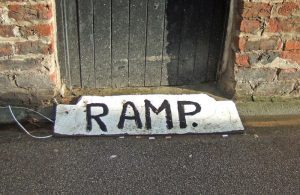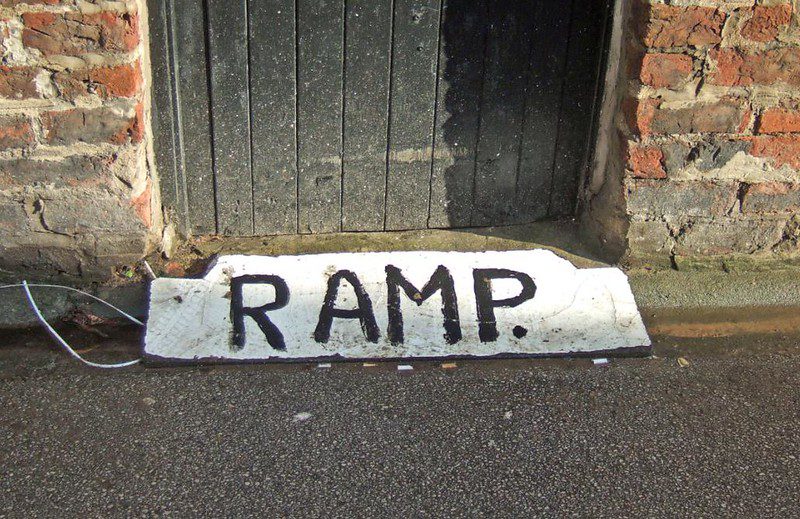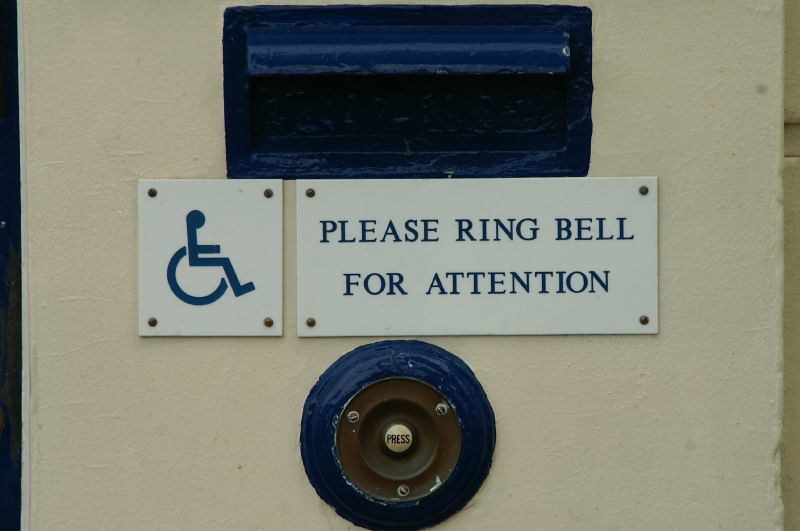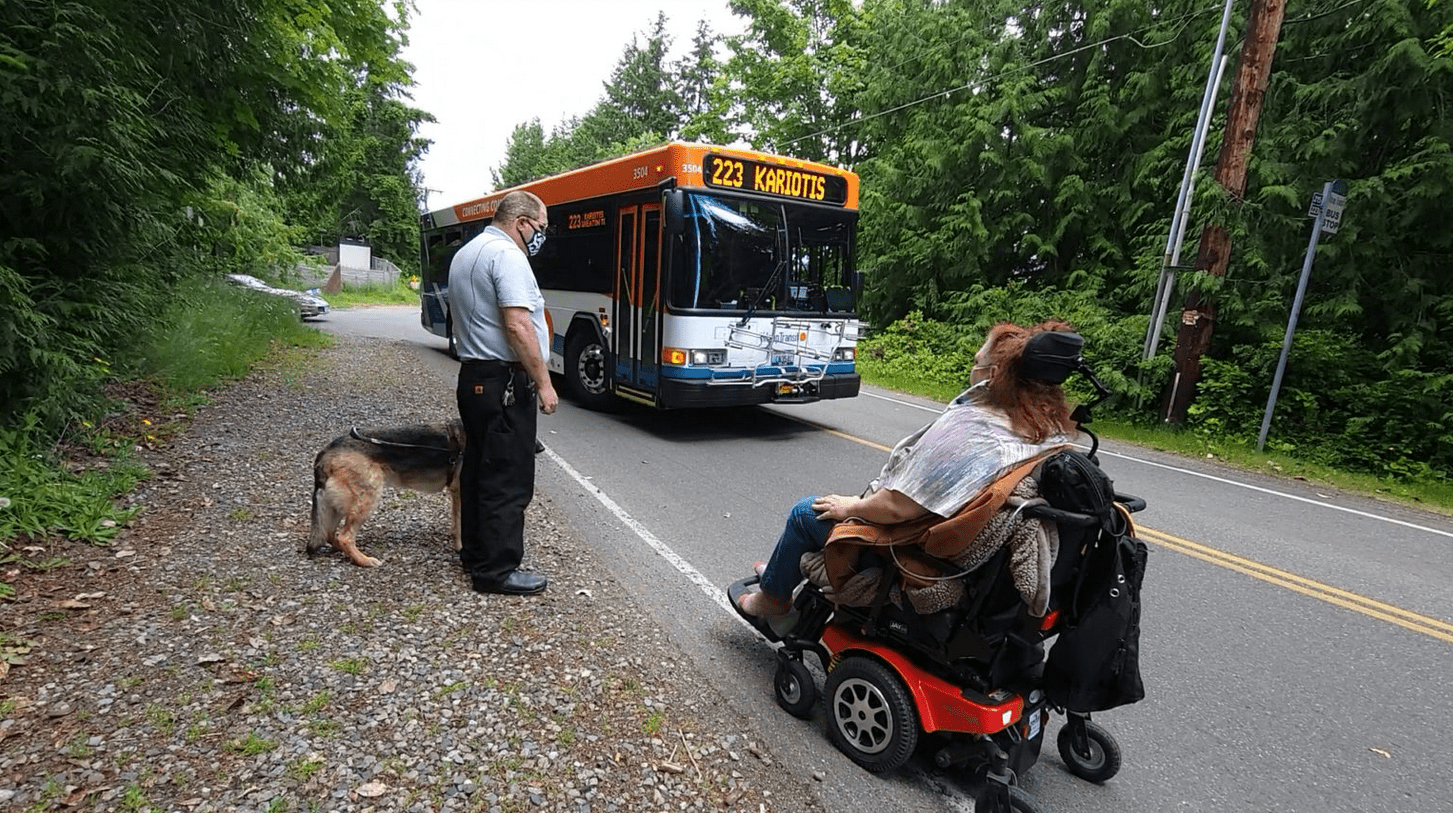This article is part of the Under the Lens series
Not Just Ramps—Disability and Housing Justice

Photo by Flickr user Carl Spencer, CC BY-NC 2.0 Deed
I was in a Facebook group discussion recently in which someone was talking about downsizing and moving for their retirement. A friend cautioned them to look for only a fully accessible home; she’d recently dealt with the loss of her mother after multiple health issues that affected her mobility. With aging you are going to need accessibility sooner or later, but you never know when. No one wants to be stuck at the hospital unable to go home.
I was reading this discussion from my second-floor apartment in a 120-year-old two-family home with fairly steep stairs and no driveway or place to put a ramp, in a neighborhood full of similar homes. And I was doing so while reviewing a draft of a video in which one my neighbors talks about not being able to return to such a home after he lost his leg.
Having recently edited our series on disability and housing, I was tempted to add a cynical comment to the Facebook thread about how few options there are for accessible housing even for people who need it right now, let alone everyone who likely will soon, especially as society ages and new health issues like long COVID lead to higher levels of disability. I didn’t make that comment because I didn’t want to dissuade them from looking for something they probably would benefit from.
But that exchange did lead me to this conclusion: If we’re going to do something meaningful about housing accessibility, pretty much all new home construction—market-rate and affordable, single-family and not—should be built accessible.
After all, much of the existing housing stock is hard to renovate to full accessibility. It can, and should, be improved in many ways, but getting to accessibility on existing homes, especially older ones, is not a simple fix. Certain things, like wider doorways, can be nearly impossible to add later. Add to that the fact that we’ve already been underbuilding fully accessible units in new construction for a long time, so there’s a massive backlog of need. Many people are “making do” in homes that really don’t work for them.
As Meir Rinde wrote for us:
About 39 million U.S. residents age 15 and older (12 percent) have physical disabilities, but only 4 percent of homes can accommodate people with moderate mobility difficulties, according to an analysis of the 2011 American Housing Survey. The same analysis found that only 0.15 percent of housing units were fully wheelchair accessible.
Our current standards are only going to leave us falling further behind:
Section 504 [of the Rehabilitation Act of 1973] says that in any housing development that receives federal funds, at least 5 percent of the units must be accessible for people with physical or mobility disabilities and 2 percent accessible for people with vision or hearing disabilities.
To be clear: 12 percent of people have physical disabilities, but even federally funded new housing only requires 7 percent of new units to be accessible.
The Fair Housing Act applies much more widely, to all private and public multifamily construction in buildings with more than four units, except for units not on the ground floor in buildings with no elevators. Its standards of accessibility are more modest, but it does require that construction be adaptable to full accessibility without major structural modifications. This is significant, though enforcement of it is an ongoing issue.
And those adaptations still take time and money. José Torres-Vega of Denver, Colorado, waited months and needed a third-party grant to have a shower he could use in his current apartment.
Advocates are pushing for the Section 504 percentage to be closer to 10 percent, and in some localities they have won the “ambitious” 11 percent. If there are no federal funds in a given development, it is, in the words of former Albany, New York, council member Dominick Calsolaro, “worse than pulling teeth” to get even a few accessible units included.
Rather than accepting a percentage of fully accessible units that’s still lower than the number of people who need them right now, continuing to set us ever farther behind, it would be reasonable to look at the immense backlog that exists and commit to a decade or two of making every new development at least 50 to 75 percent at a higher standard of accessibility. Crucially, this needs to mean buildings under four units too.
What if having a home you could age in place in, could have disabled friends visit, could stay in after a medical crisis, became something expected, the norm? It would, like so many other things, be a net cost savings to society if we addressed those issues with upfront investment instead of trying to handle the problems—from injuries and isolation to overinstitutionalization and homelessness—that not addressing them causes.
There will always be younger, temporarily abled folks who are happy to live for a while in historic homes, walk-up tenements, and micro housing. We can’t and shouldn’t abandon (or in the case of micro housing, keep preventing) them as part of a varied and cost-efficient housing ecosystem. But we need to recognize that until we’ve actually caught up, the need for full-sized new homes to come with significant accessibility features—especially the ones it’s hard to add later—is much higher.






This is one of the most meaningful, logical essays on accessible housing that I’ve ever read.
Bravo.
Just shared on 6 of my social media platforms and a design listserve.
YES!!!!! I have been saying this for years. Am amazed by the number of folks who build new without even an accessible entrance. Our last two houses have been accessible, so a knee replacement for one of us and a terrible accident for the other required NO REHAB hospital stays. We came HOME, where healing is best. It also allowed us to welcome friends with MS, elderly friends and even elderly pets too large to lift.
Keep up the good fight. You are spot on!